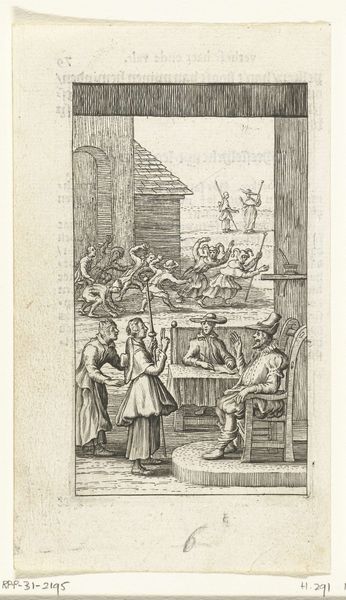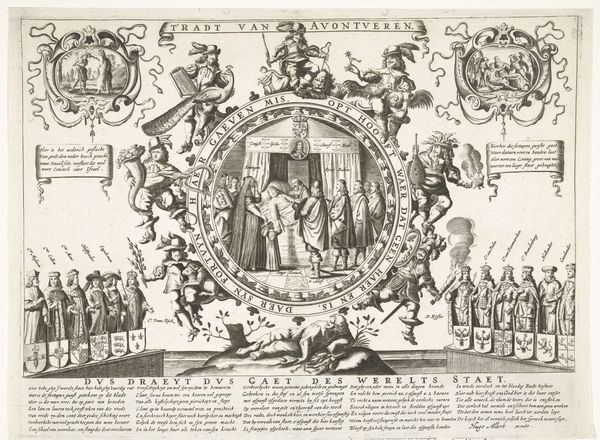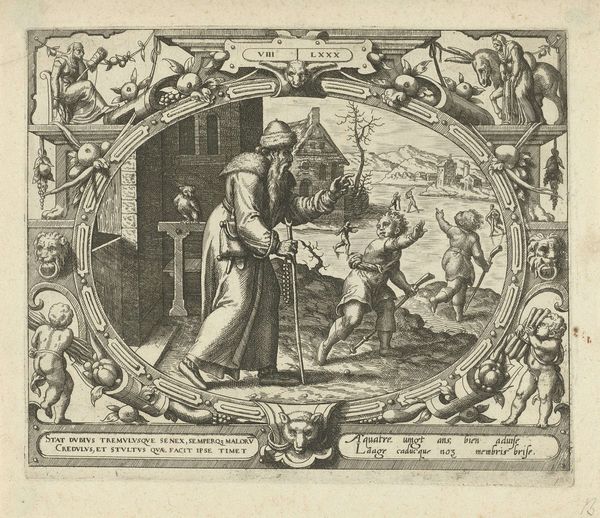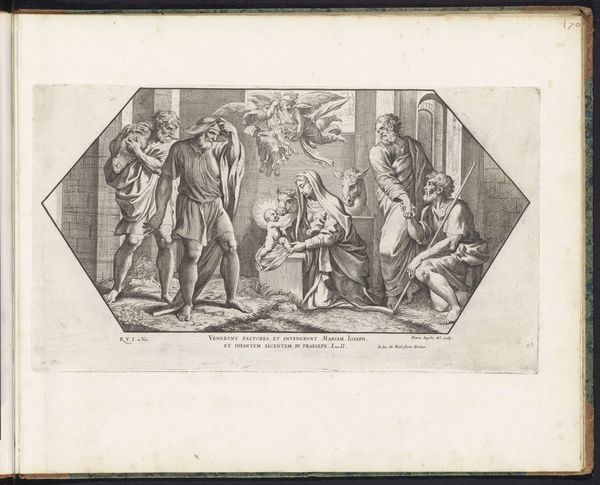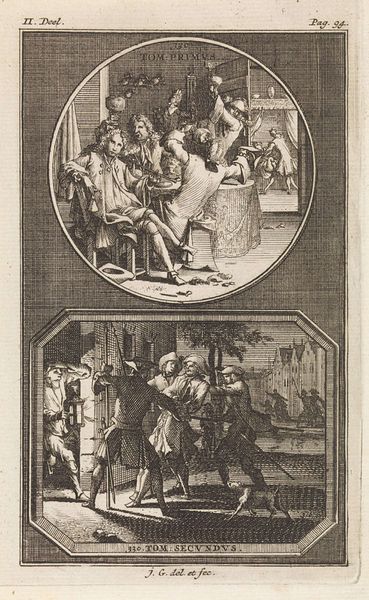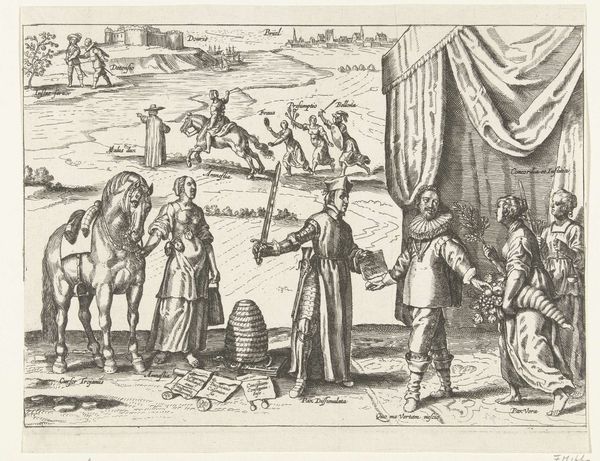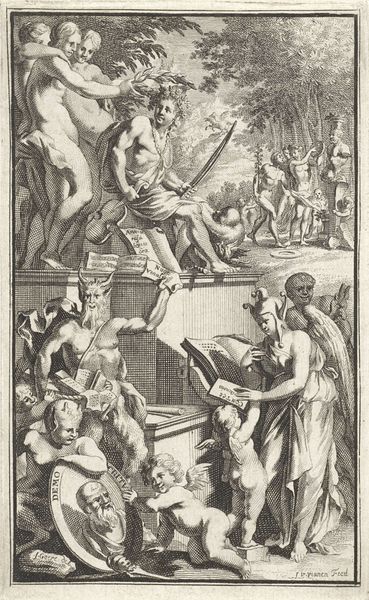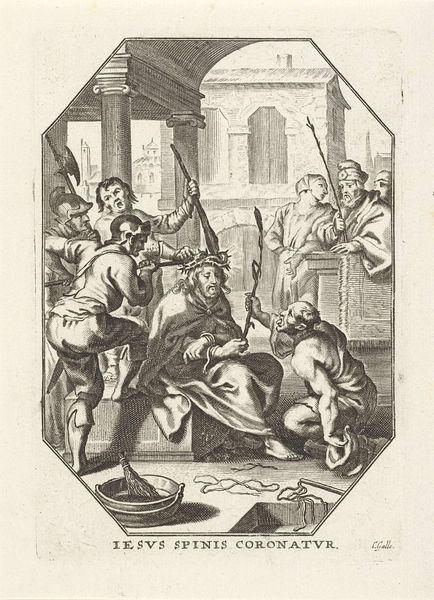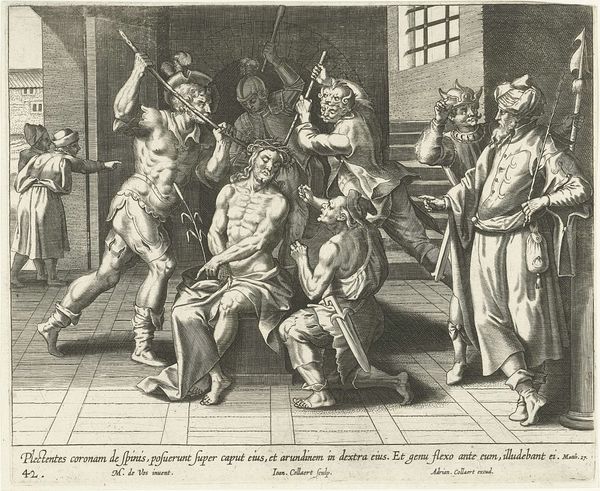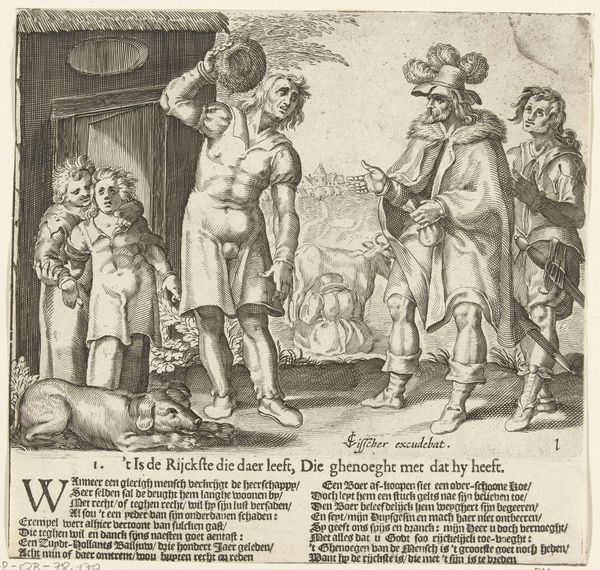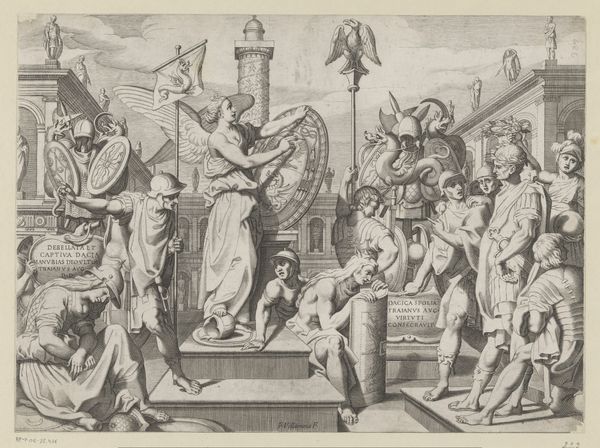
print, engraving
#
comic strip sketch
#
narrative-art
#
baroque
#
mechanical pen drawing
# print
#
pen illustration
#
pen sketch
#
personal sketchbook
#
sketchwork
#
pen-ink sketch
#
pen work
#
sketchbook drawing
#
genre-painting
#
storyboard and sketchbook work
#
engraving
Dimensions: height 60 mm, width 74 mm
Copyright: Rijks Museum: Open Domain
Curator: Let’s take a look at Bernard Picart's "Mannen met een narrenkap op het hoofd," or "Men with fool’s caps on their heads," a 1720 engraving in the Rijksmuseum’s collection. It’s quite a busy scene! What strikes you first? Editor: It's chaotic, certainly! The figures, all in these strange jester hats, seem caught in some sort of dramatic, perhaps even violent, interaction. There’s a palpable sense of tension, a raw undercurrent of what I'd dare to define a carnivalesque social commentary. Curator: Carnivalesque indeed! The jester caps signal a temporary inversion of social order, a period of sanctioned foolishness. Picart was known for his satirical engravings, often commenting on societal flaws through allegorical scenes like this. The print reflects a common motif of exposing human folly. Editor: So, the work stages something beyond a mere festive celebration. Note how they handle money. See also the man forcibly taking off the cloak from another. And that person seating over that trunk at the bottom right: why are they so alienated? There is something much darker at play here: are these jesters actually perpetrating exploitation? What systems, then, are we laughing at, and who is being left outside the laughter? Curator: Those are insightful questions. One can read this artwork as a visual treatise about social class, maybe reflecting the economic anxieties of the time. It reflects institutional commentary embedded in a print aimed at wide circulation. The fool's cap might, in fact, indicate the foolishness of greed. Editor: Right, and that raises other vital questions. Picart clearly uses a pen technique, and its effect makes everything highly contrasted: are we looking at simple vice denunciation or a social structure in need of profound re-evaluation? Picart’s choices seem aligned with using humour as a device of critique to unveil how structures affect ordinary people's lives. Curator: I concur that its brilliance lies in this inherent tension. We observe not just individual vices but potential corruption across different social strata in 18th-century European society. Editor: Exactly. Picart's work then becomes less about judging the fools and more about interrogating the very system that creates them—a very early and clever activist work. Curator: The work provides a very pertinent commentary, inviting viewers to reflect critically. Editor: I agree. "Men with fool’s caps on their heads" pushes us to recognize that societal critique isn't merely a passive observation.
Comments
No comments
Be the first to comment and join the conversation on the ultimate creative platform.
